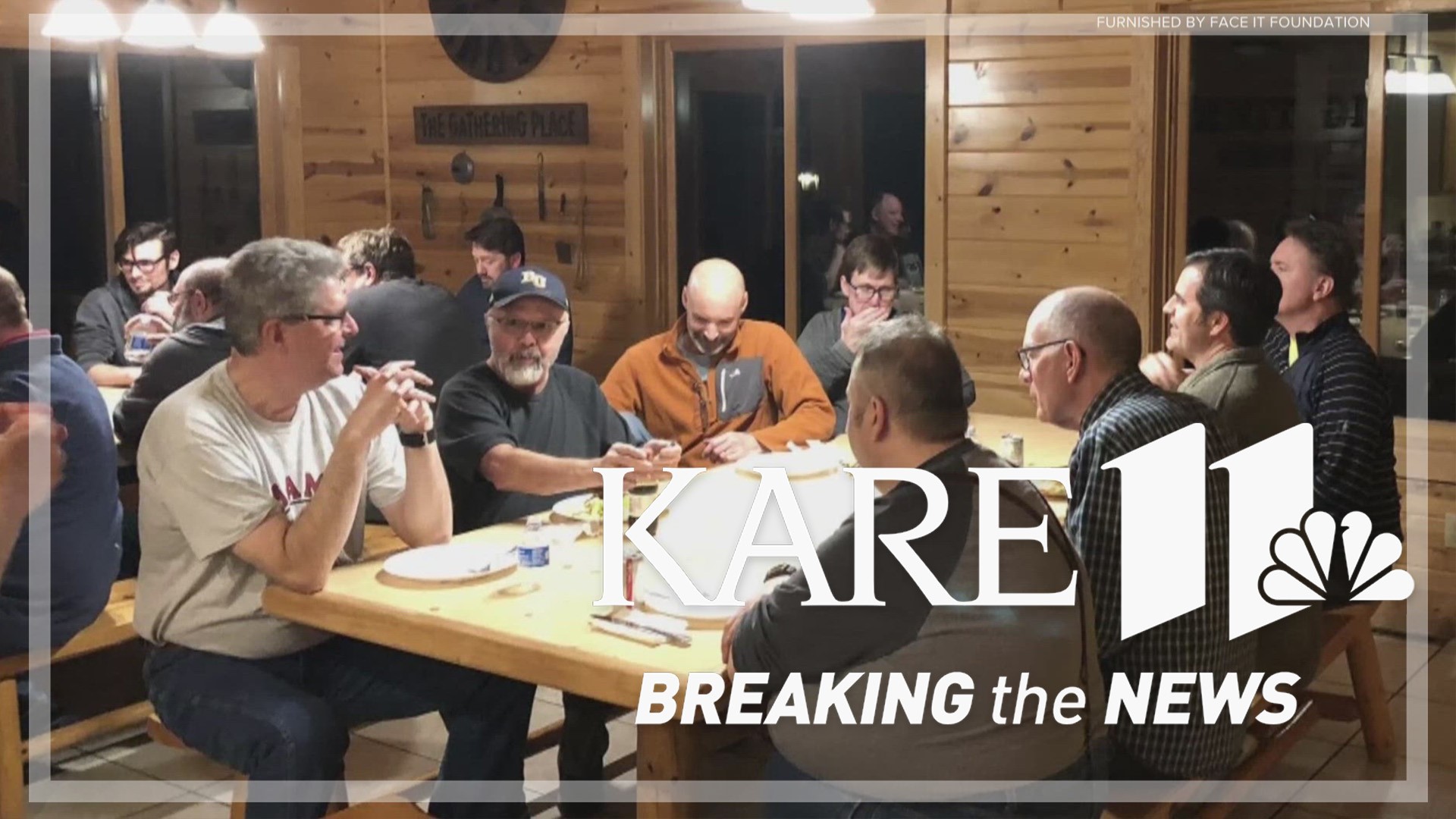MINNEAPOLIS — The rate of people dying by suicide in the United States has reached it's highest level since World War II, and a jump in rates among older men is one of the factors driving the increase, according to new 2022 data released by the CDC.
The provisional data, which could increase as pending cases of death are classified as suicide, shows that men died of suicide at nearly four times the rate of women in 2022. Nearly six in 100,000 women died of suicide, compared to 23 in 100,000 men.
Although the divide in suicide rates between genders is nothing new, Mark Meier, who has dedicated his life to helping men find help with their mental health, says isolation among older men remains a major obstacle.
"I get that it's frightening, it's scary, but ask for some help," said Meier, who co-founded the Face It Foundation with his friend Bill Dehkes after learning exactly how life changing it can be to ask for — and receive — help. "I'm a clinical social worker by background, but Bill and I launched Face It because both he and I are suicide attempt survivors, and we both saw this gaping hole that men need other guys to talk to."
In the 14 years since, Face It has grown to include 23 different peer support groups, which currently serve and connect about 220 men.
"These guys, collectively, have helped each other," Meier said. "They've been there in the time of crisis. I mean, I could roll text messages and show you guys, who at that moment when the decision was, do I live or die, reached out to somebody. That person saved their life."
But he says today's report from the CDC shows just how far they still have to go... a breakdown of the suicide rate among men of different ages... show that the youngest groups... from ages 10 up to 34... did see rates fall slightly... but all older age groups saw rates jump... including a 10 percent increase among those 55 to 64... and a rate among those 75 and older that far exceeds all others.
Mark Meier: "You know, when you think about people in that 45-64, or certainly that greater than 75 category, we need more outreach. I'm glad to see younger people, that the rate in younger people has reduced a bit, and I think you can attribute that to the fact that people are talking about it and younger people are more willing to seek help and look for help. I think as you continue to move along the age continuum, and we see these high rates, that's a group of people who still aren't willing to come forward, aren't willing to seek help, aren't willing to talk about the traumas they've been through."
Kent Erdahl: "Do you see a struggle to get men to enroll?"
Meier: "You know, I'll tell you, for every ten guys who reach out to join a group. One of them will do it. After I've met with them, after we talk about a group there's a reluctance to join. I've seen an increase in people asking for help, but then the follow through becomes part of the issue. When these guys do gather, and they are in groups, and they do show up consistently, incredible things happen."
Erdahl: "Our hope, in doing these stories, is that maybe somebody watching needs help, what would you tell that person today?"
Meier: "I would tell them to reach out. You know, come to Face It, send me an email, talk to somebody. If you think you can't talk to your friends? You can."
Erdahl: "What would you tell those friends, or family members, who may be concerned about a guy in their life?"
Meier: "You know, I think people are afraid to talk about suicide, people are afraid to bring up, 'I am concerned about you' because they are afraid that it will tip somebody into an action. It's not true. Tell them you care. Tell them you see things are difficult. Tell them you will walk with them through these problems, and that you'll help them find help. You can't just go at somebody and tell them 'Go get help' and then disappear on them, especially guys. They need people to walk with them."
Mark wants to emphasize that there are more options to ask for and connect with help than ever before. He points to the nationwide expansion of 988, to smaller groups that focus specifically on professions like farming and first responders, which have even higher rates of suicide.
If you or someone you know is facing a mental health crisis, there is help available from the following resources:
- Crisis Text Line – text “MN” to 741741 (standard data and text rates apply)
- Crisis Phone Number in your Minnesota county
- National Suicide Prevention Lifeline at 1-800-273-TALK (8255), Talk to Someone Now
- Throughout Minnesota call **CRISIS (**274747)
- The Trevor Project at 866-488-7386
Watch more local news:
Watch the latest local news from the Twin Cities and across Minnesota in our YouTube playlist:

